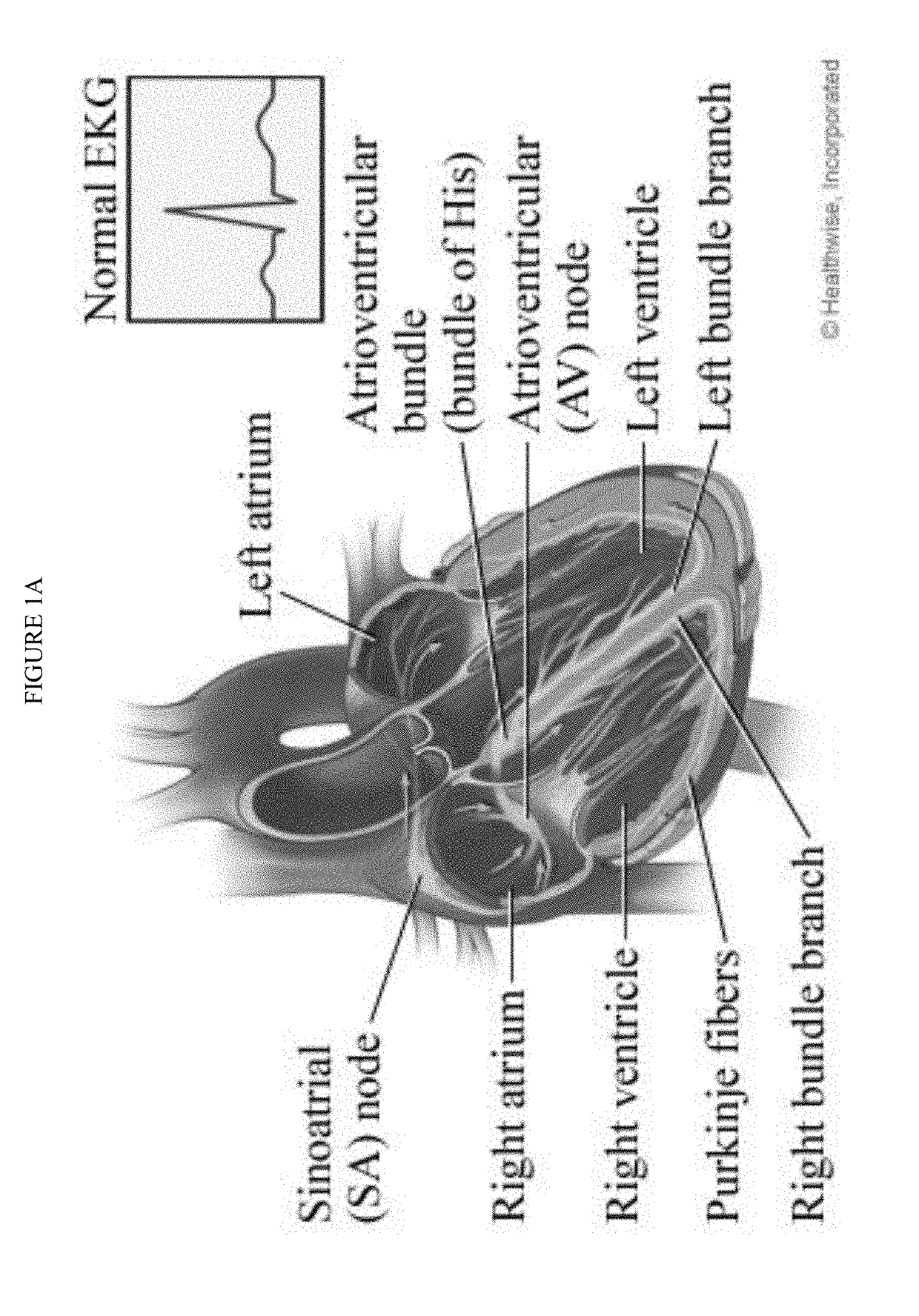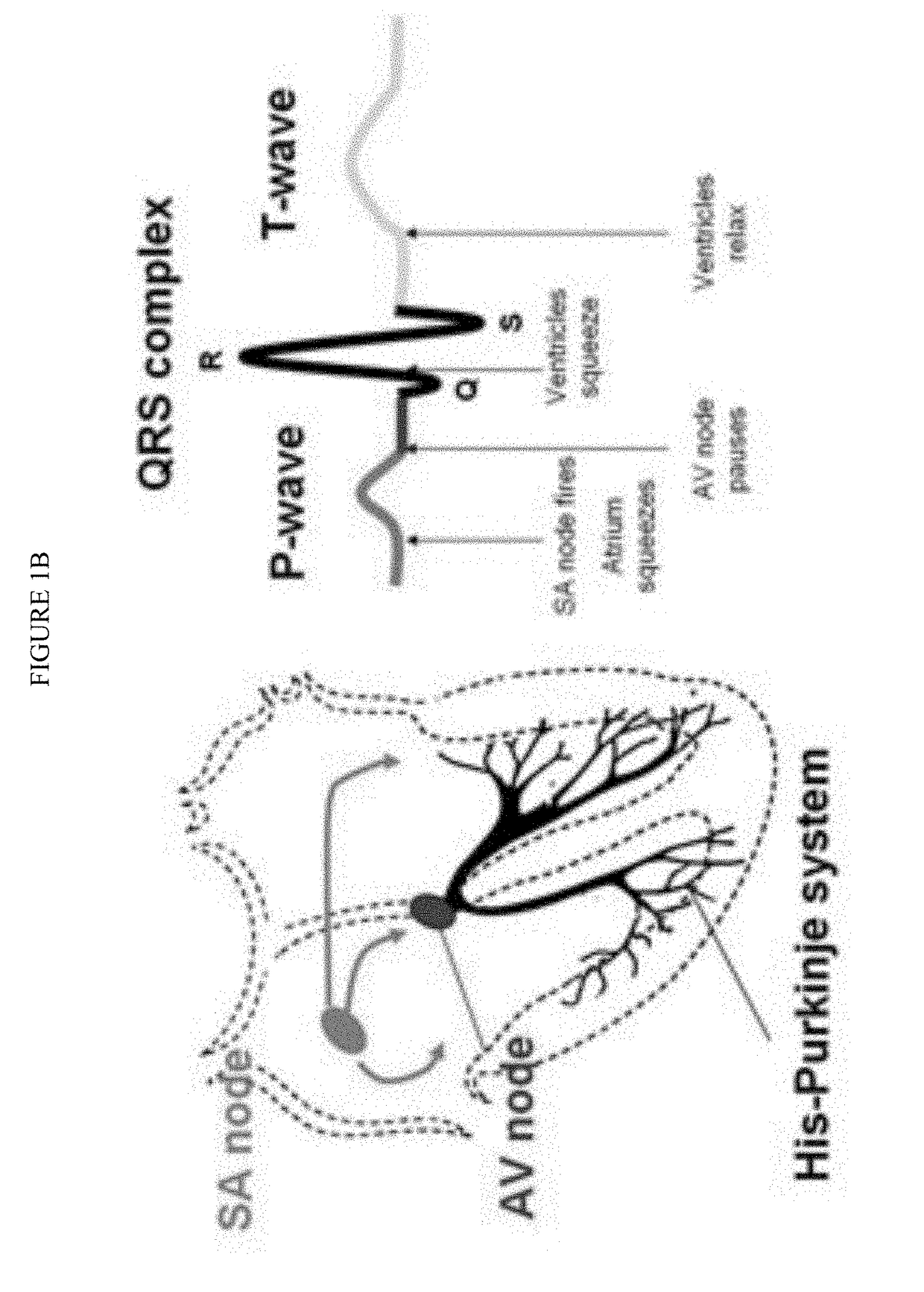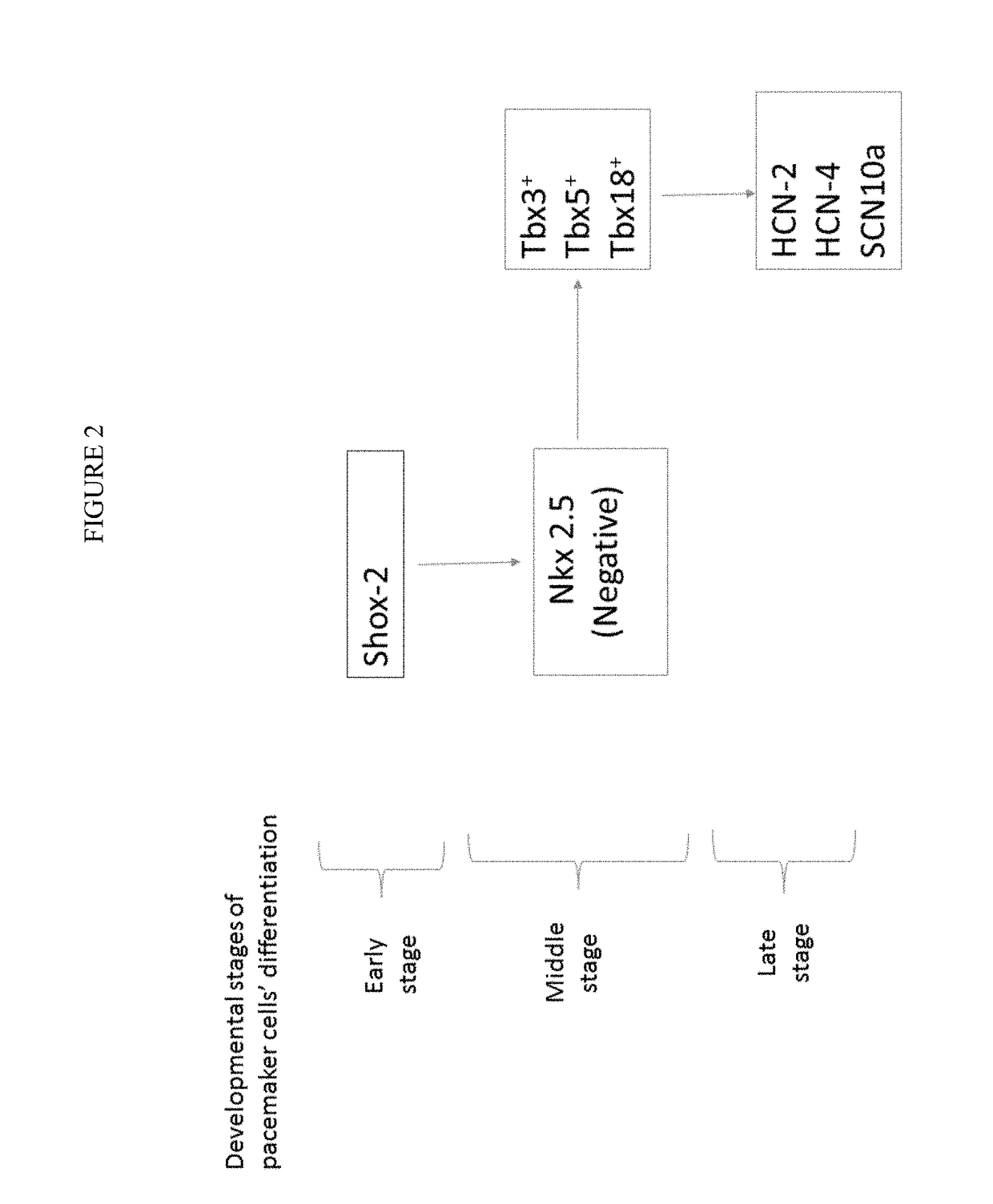Induced Pacemaker and Purkinje Cells from Adult Stem Cells
a technology of stem cells and induced pacemakers, which is applied in the direction of genetically modified cells, skeletal/connective tissue cells, drug compositions, etc., can solve the problems of mechanical and/or electrical failure, irregular beating, and not a perfect solution, so as to eliminate the rejection problem, convenient to use, and convenient to use
- Summary
- Abstract
- Description
- Claims
- Application Information
AI Technical Summary
Benefits of technology
Problems solved by technology
Method used
Image
Examples
Embodiment Construction
[0096]The invention provides novel methods of making pacemaker cells and Purkinje cells or sinoatrial nodes (SANs); the pacemaker cells, Purkinje cells, and SANs made thereby; and methods of using same, e.g., to replace or supplement damaged pacemakers and Purkinje fibers in the heart of patients, such as human patients. The cells can be surgically delivered directly or by catheter based injection to the place where they are required. For the repair of the sinus node for example, a catheter based injection of a few thousand cells into the damaged and reduced functioning sinus node is sufficient to effect repair.
[0097]For the repair of tachycardic arrhythmias, Purkinje cell are injected into the slow conducting zone, such as the border zone of an infarction, in order to accelerate the speed of conduction in this arrhythmogenic substrate and thereby to close the re-entry pathway by accelerating the circulating impulse in such a way that it meets refractory myocardium and the re-entry ...
PUM
| Property | Measurement | Unit |
|---|---|---|
| voltages | aaaaa | aaaaa |
| diameter | aaaaa | aaaaa |
| cell size | aaaaa | aaaaa |
Abstract
Description
Claims
Application Information
 Login to View More
Login to View More - R&D
- Intellectual Property
- Life Sciences
- Materials
- Tech Scout
- Unparalleled Data Quality
- Higher Quality Content
- 60% Fewer Hallucinations
Browse by: Latest US Patents, China's latest patents, Technical Efficacy Thesaurus, Application Domain, Technology Topic, Popular Technical Reports.
© 2025 PatSnap. All rights reserved.Legal|Privacy policy|Modern Slavery Act Transparency Statement|Sitemap|About US| Contact US: help@patsnap.com



